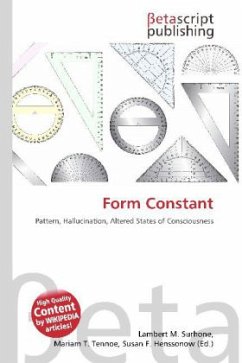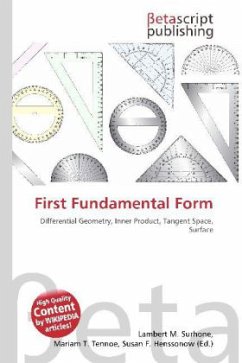
Top- Dimensional Form
Versandkostenfrei!
Versandfertig in 6-10 Tagen
30,99 €
inkl. MwSt.

PAYBACK Punkte
15 °P sammeln!
Please note that the content of this book primarily consists of articles available from Wikipedia or other free sources online. In differential topology, a top-dimensional form is a differential form whose degree is the same as the dimension of the manifold on which it is defined. A differential form of degree k, or (differential) k-form, on a smooth manifold M is a smooth section of the kth exterior power of the cotangent bundle of M. The set of all k-forms on M is a vector space commonly denoted k(M). Differential forms provide a better definition for integrands in calculus, such as (x) dx (...
Please note that the content of this book primarily consists of articles available from Wikipedia or other free sources online. In differential topology, a top-dimensional form is a differential form whose degree is the same as the dimension of the manifold on which it is defined. A differential form of degree k, or (differential) k-form, on a smooth manifold M is a smooth section of the kth exterior power of the cotangent bundle of M. The set of all k-forms on M is a vector space commonly denoted k(M). Differential forms provide a better definition for integrands in calculus, such as (x) dx (a "1-form") or (x, y, z) dx dy dz (a "3-form"), but their uses extend far beyond elementary calculus. In fact, the set of all forms on M (denoted (M)) is an algebra, so some (but not all) higher dimensional forms can be obtained from lower dimensional forms via multiplication in this algebra. Moreover, there is map from k(M) to k+1(M) given by a generalization of the differential from elementary calculus.












